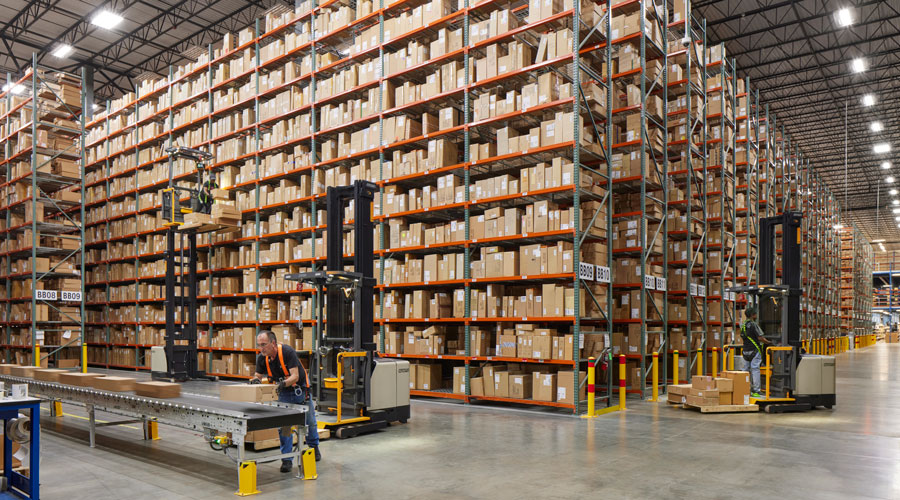Optimizing Storage Space with the Appropriate Racking Solution

Making the best use of storage space is one of the most common challenges in the warehouse. Thoughtful rack design matches the type of storage to inventory movement and helps ensure it follows the most efficient path both into and out of the warehouse. If square footage is limited, accessing the facility’s vertical space with a customized racking solution can unlock additional capacity and help you meet challenging space and storage demands.
When it comes to racking, it’s important to point out that one size does not fit all. It is important to determine the customized warehouse racking solution that best fits the available space and the application’s storage requirements. Crown’s Warehouse Solutions experts consider several components, including product type, size, weight, expected throughput and the warehouse storage ratio to identify the best combination of racking and storage solutions for each application.
The racking solution should also be matched with the right lift truck capabilities to determine if any changes are needed to the existing forklift fleet to ensure the desired performance level. Relevant building codes related to rack design and configurations, safety standards for sprinkler systems and other factors should also be considered in order to avoid what could be catastrophic results.
Menasha, a provider of primary and secondary packaging services for large consumer product goods, worked with Crown to increase its warehouse storage capacity with a new racking solution. The company consulted Crown on a warehouse racking design that would optimize both vertical and horizontal space. Crown also provided guidance on the best lift trucks to deploy for each application. The company was able to increase storage capacity by an estimated 48% due to the racking installation.
Common types of storage racks
The type of warehouse racking system you install can significantly impact productivity, storage capacity and your ability to adapt to changing inventory demands. Below are the most common types of racking systems:
- Selective pallet racks are the most common type used in today’s warehouses, especially for general warehousing and manufacturing. They are known for their pallet accessibility, heavy load capacity and flexible design.
- Double-deep selective racks are created by placing two selective pallet racks adjacent to each other. It can be a less expensive means of creating high-density storage.
- Pallet flow-thru racks are ideal for first-in, first-out (FIFO) operations that experience high turnover rates. Pallets are loaded from one side and stored in multiples deep.
- Pallet shuttle racks are a semi-automated, deep lane system that utilizes an integrated cart to transport pallets loaded by the lift truck at the lane entry into the deep lane.
- Pick modules are high-density storage systems that integrate different types of warehouse rack storage solutions into multiple levels to store inventory for picking and fulfillment of orders.
- Push-back racks allow for higher-density storage by storing multiple pallets deep on each level, with each pallet loaded from the front.
- Cantilever racks utilize cantilever arms attached to columns rather than rails and feature open access on one side to facilitate easy loading and unloading.
- Drive-in racks are higher density warehouse racking that reduce the number of operating aisles and store pallets in multiple depths with one entry or exit point (drive-in).
Once the right combination of rack types has been selected, Crown’s Warehouse Solutions experts can coordinate and manage the installation process from start to finish, utilizing an extensive network of trusted installation professionals that meet Crown’s rigorous standards.
Taking a comprehensive approach to warehouse design requires more than just identifying the appropriate racking system. For more information, read our new e-book, “Taking a Comprehensive View of Your Warehouse Environment.”